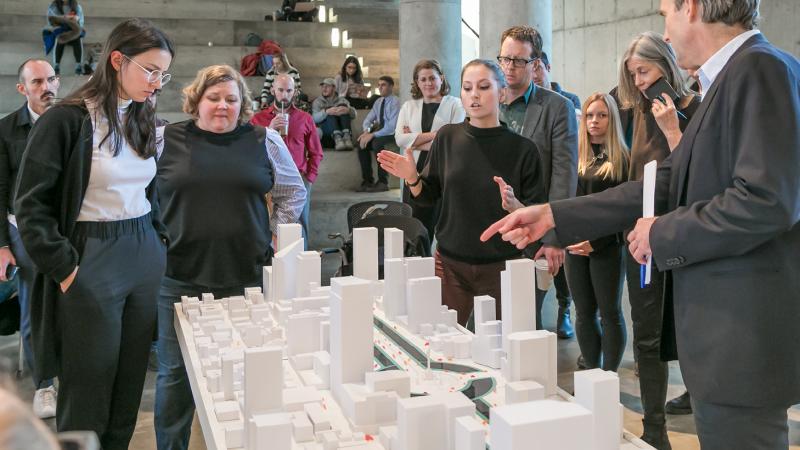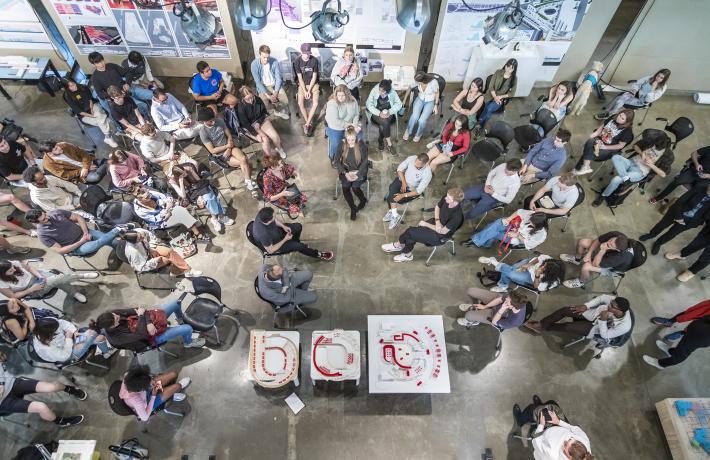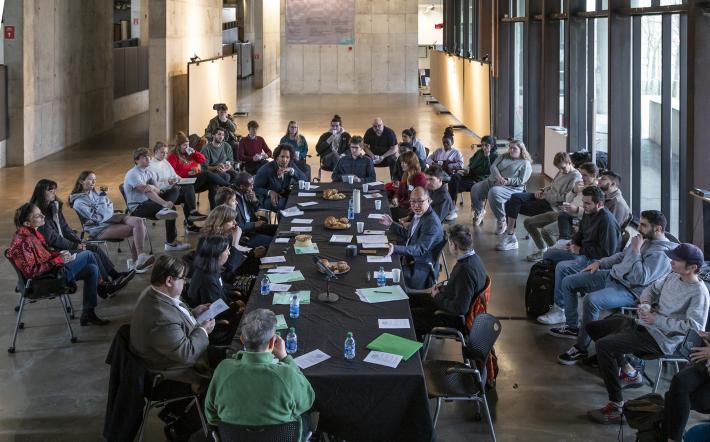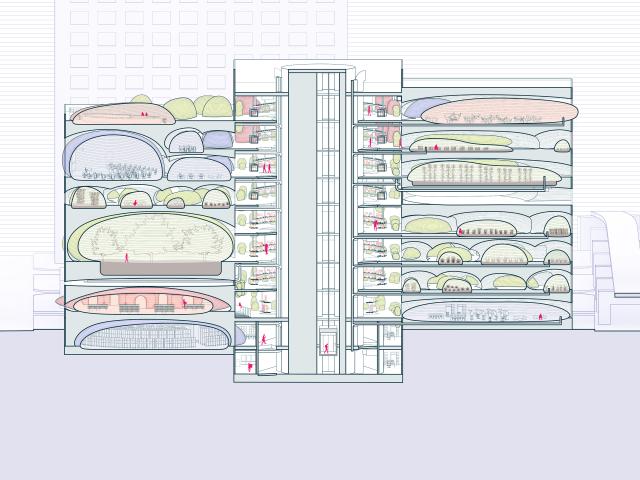Designing the US Embassy in Mexico: Gui Competition 2017
“I am very impressed with the skill, resolution and fidelity exhibited in these projects,” stated visiting juror Laurie Hawkinson, professor of architecture at Columbia University's Graduate School of Architecture, Planning and Preservation and partner at Smith-Miller + Hawkinson Architects, prior to the announcement of the 2017 Gui Competition winners. “The clarity of the work enabled us to discuss the importance of this building—the US Embassy in Mexico—which is an extremely serious architectural proposition.”
In evaluating the US Embassy in Mexico plans presented by the ten Gui Competition finalists, Architecture Section Head Todd Gannon explained that the jury considered three criteria: conceptual clarity—that the main ideas driving the design were clearly evident; disciplinary purchase—that the projects looked beyond mere solutions to engage current conversations in contemporary architecture; and programmatic plausibility—that each project presented a viable solution to the embassy program. “It’s hard to do all three,” added Gannon to the assembled senior architecture design studio. “Each scheme picked its battle. There were many strong projects today, and the jury worked to balance these three criteria in our selections.”
Following comments from the remaining jury, which included Assistant Professor of Architecture Andrew Cruse, Migg Urban Visiting Professor in Architecture Emily Mohr and Tracy Perry, associate architect at NBBJ, the winners were announced: Rachel Ghindea (First Place), Jack Raymond (Second Place), Alex Oetzel (Third Place), Tyler Krebs and Caroline Proffit (Honorable Mentions).
Rachel Ghindea’s winning project, Formal Generators of Space, investigates how the border between the US and Mexico enables interaction rather than acts as a barrier. She uses pyramidal shaped objects that intersect and overlap to create space within her plan. “Every intersection suggests a border, perhaps even more so an overlapping of borders, which forces the created spaces and the people within those spaces to interact,” she explained.
To address security protocols in the program, Ghindea’s design stratifies the layers of offices within the embassy. To enhance visual interactions between these “planes” or office levels, she employs the use of glass in intermediate walls and nested spaces, which allows higher security or privates spaces to hang over a public area. “This reminded me of territories of one country existing within another – much like the embassy could be considered a US territory within Mexico,” Ghindea commented.
While this year’s competition program was very specific with regard to security and extensive office requirements, Ghindea was able to explore her architectural interests. “I only realized at the end of working on the project that this was something I had been working on for a long time,” she commented. “The multiplication of elements, intersections and the space they can create, high levels of contrast in my graphic work; these were elements of a style I had been studying and interested in for the last four years.”
About the James E. Gui '54 Design Competition
On May 3, 1996, the James E. Gui ‘54 Design Competition Awards Fund was approved by The Ohio State University Board of Trustees. The Fund was generously established by Jim and Ann Gui through the OSU Foundation and will exist in perpetuity. This year’s competition marks the 22nd annual James E. Gui ‘54 Design Competition. The goal of the competition is to test the skills of students in the senior design studio in designing a project for a complex program on a challenging site. The competition stipulates that the jurors are to consist of three Knowlton School faculty members, a local practitioner and a nationally recognized architect. Jane Murphy, associate professor of architecture, served as the coordinator of the senior design studio and organizer of the competition.





